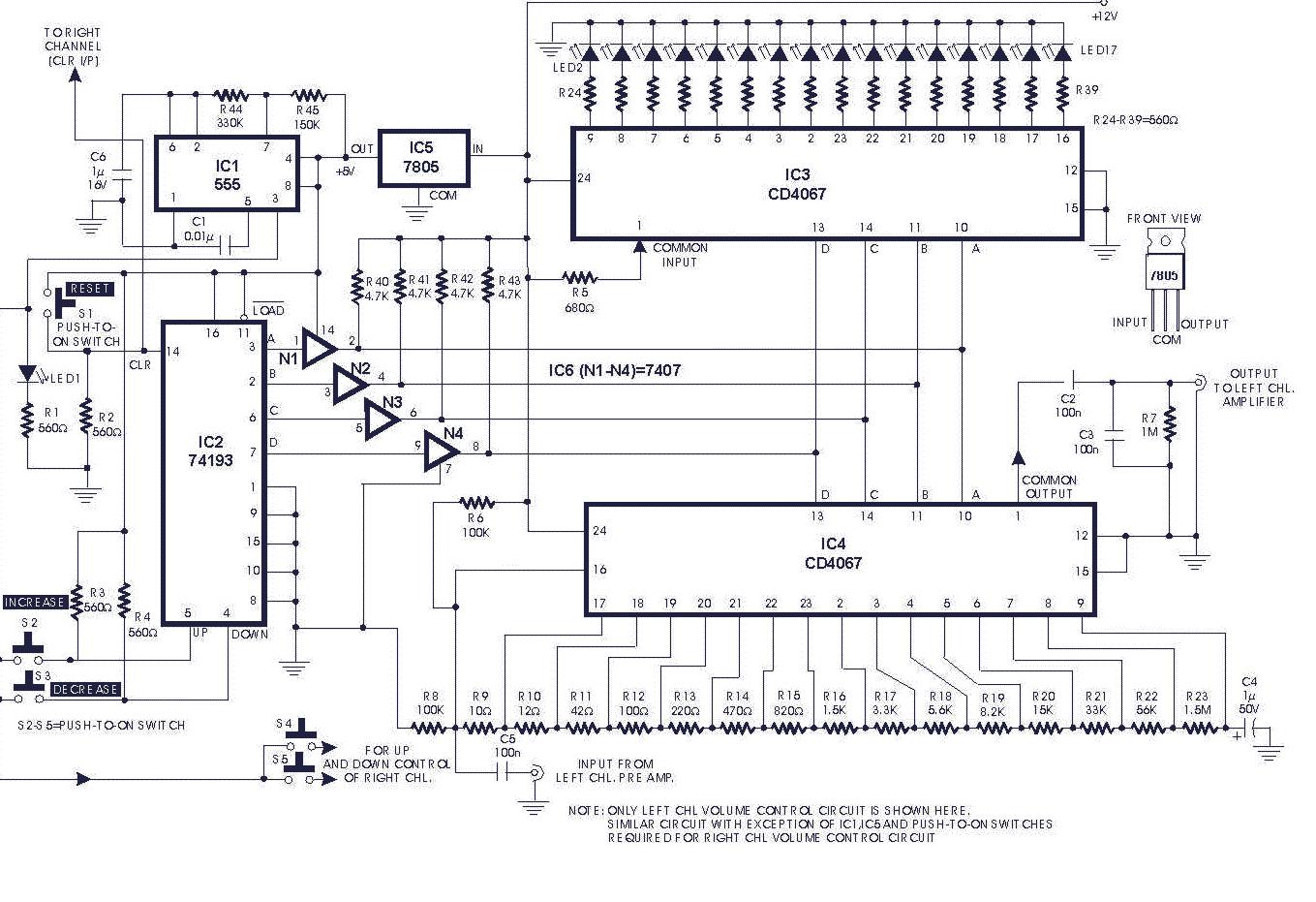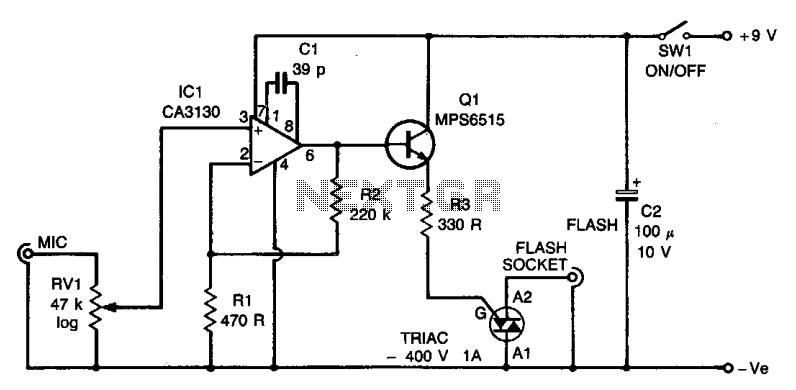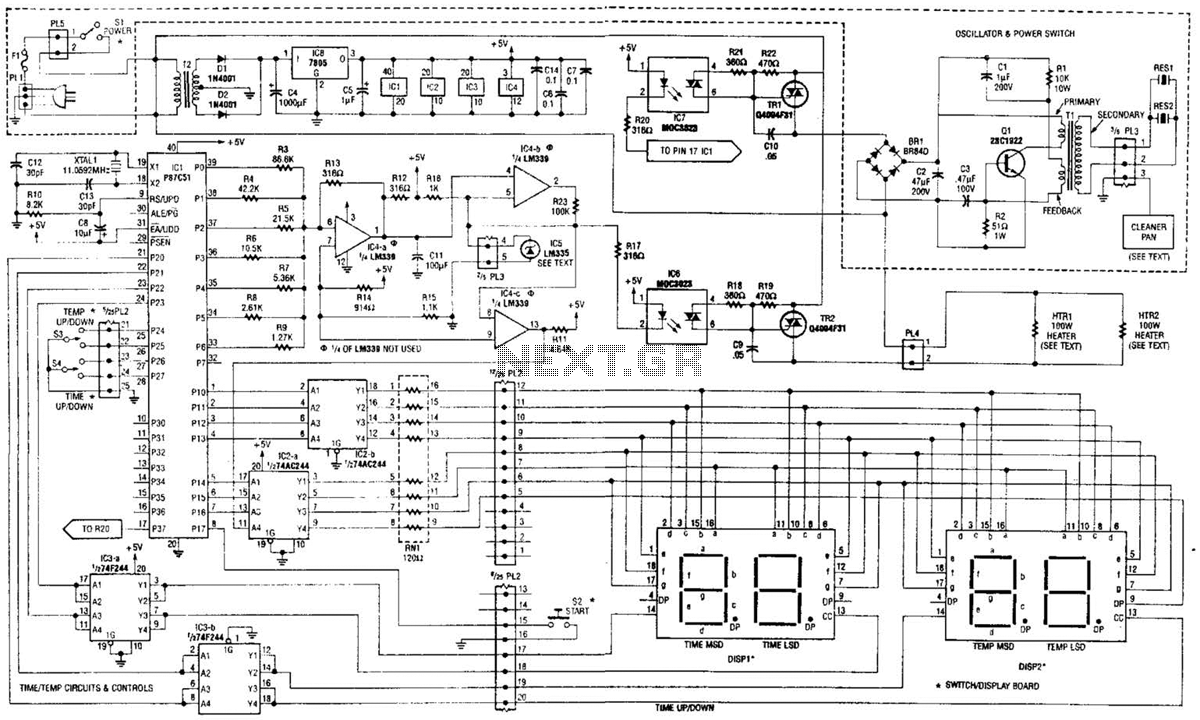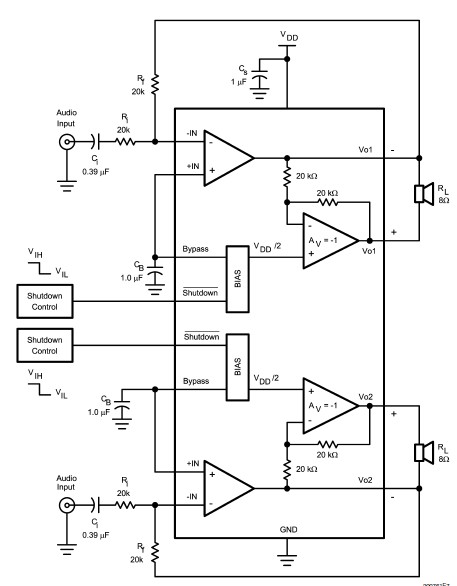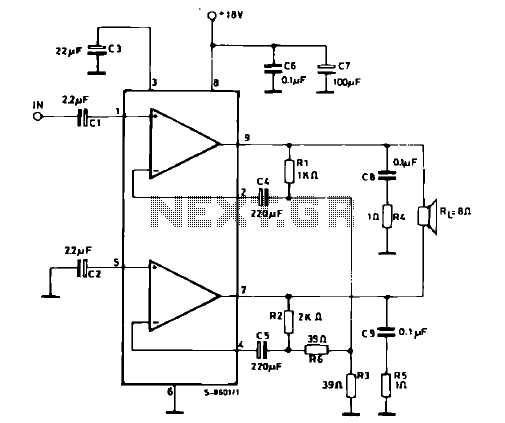
Stereo Tone Control with National 3D Sound
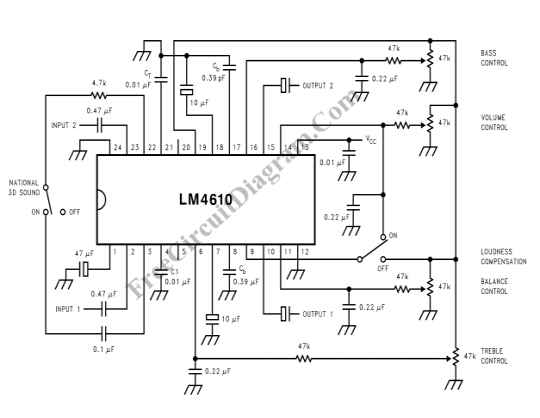
The LM4610 utilizes a DC signal to manage the tone (bass/treble), volume, and balance circuits. The benefits of employing DC control include the ability to operate in mono mode.
The LM4610 is an integrated circuit designed for audio applications, specifically for controlling various aspects of sound output such as tone, volume, and balance. The use of a DC signal for control allows for precise adjustments and simplifies the design of audio systems.
The tone control feature enables the adjustment of bass and treble frequencies, allowing users to tailor the audio output to their preferences. The volume control function adjusts the overall loudness of the audio signal, while the balance control allows for the adjustment of sound levels between the left and right audio channels, ensuring an optimal listening experience.
One of the significant advantages of using DC control in the LM4610 is its compatibility with mono audio systems. This capability is particularly beneficial in applications where stereo sound is not required, allowing for a more straightforward design and reduced component count. The integration of these controls into a single chip minimizes the need for external components, thereby enhancing reliability and reducing the overall footprint of the audio circuit.
In summary, the LM4610 serves as a versatile solution for audio control, leveraging DC signals to provide efficient management of tone, volume, and balance in both mono and stereo applications. Its design contributes to improved performance and user experience in various audio systems.The LM4610 uses DC? signal to control the tone (bass/treble), volume, and balance circuit.?? The advantages of using DC control is that you can use a mono. 🔗 External reference
The LM4610 is an integrated circuit designed for audio applications, specifically for controlling various aspects of sound output such as tone, volume, and balance. The use of a DC signal for control allows for precise adjustments and simplifies the design of audio systems.
The tone control feature enables the adjustment of bass and treble frequencies, allowing users to tailor the audio output to their preferences. The volume control function adjusts the overall loudness of the audio signal, while the balance control allows for the adjustment of sound levels between the left and right audio channels, ensuring an optimal listening experience.
One of the significant advantages of using DC control in the LM4610 is its compatibility with mono audio systems. This capability is particularly beneficial in applications where stereo sound is not required, allowing for a more straightforward design and reduced component count. The integration of these controls into a single chip minimizes the need for external components, thereby enhancing reliability and reducing the overall footprint of the audio circuit.
In summary, the LM4610 serves as a versatile solution for audio control, leveraging DC signals to provide efficient management of tone, volume, and balance in both mono and stereo applications. Its design contributes to improved performance and user experience in various audio systems.The LM4610 uses DC? signal to control the tone (bass/treble), volume, and balance circuit.?? The advantages of using DC control is that you can use a mono. 🔗 External reference
